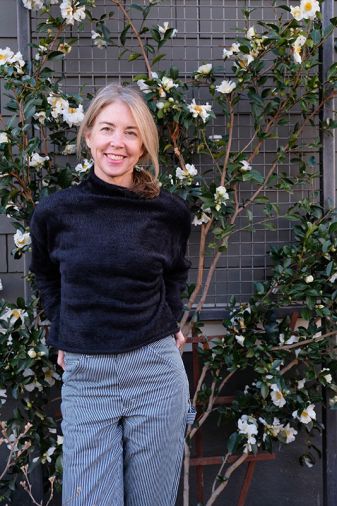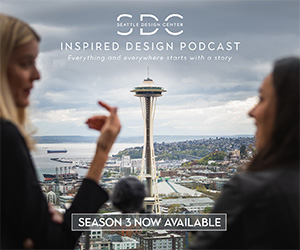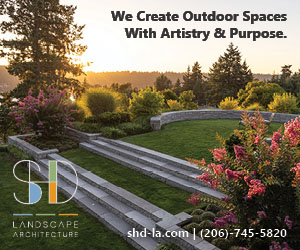When you created your own firm, what were your goals? Was there something different that you wanted to do?
Early on I worked for multiple firms on public, private, urban, rural, large, and small projects. I enjoyed those years, and they were an important learning experience. I think I have always wanted to work for myself, but I wasn’t sure how that would take shape. Becoming my own boss seemed a necessary step to clarify my own values and goals relative to design and work in general. When we moved to Portland with small kids it seemed the logical step for me, it gave me the flexibility I needed and the ability to grow at my own pace.
Describe your design philosophy.
At times I have struggled with the perception that design is a luxury. Ultimately, I firmly believe that everyone can benefit from a well-designed space, and nature-even in a small urban garden-can offer restoration and connection. I think good design is thoughtful problem solving, careful observation and listening. There is inherent beauty and interest in so much of the world around us. Good landscape architecture can harness and enhance that and add something new, delightful & unexpected.
Can you trace your interest in landscape architecture and design back to a particular influence?
My mother is a landscape architect, so that way of thinking and looking at the world was always present. My childhood was imbued with a deep awareness and experience of natural and planned landscapes. I grew up on the San Francisco Bay and spent summers exploring family farms in southern Oregon and the central valley of California, the redwood forests on the northern California coast and the High Sierra. I come from a family with a history of cultivation, design and stewardship of the land that includes farmers, landscape architects, planners, environmentalists, gardeners, nurserymen, and good old-fashioned back-to-the-landers.
Favorite part of the design process?
There is a point after you assess a project: client needs, site opportunities and constraints, regulatory framework, site context, etc. and determine the project program that you sit down and let it all percolate and draw, think and struggle a bit until something clicks. I remember a T.A. in graduate school calling this “the design flash”, which at the time seemed sort of pretentious to me, but I think it’s really just the point at which you feel like the parts move into place and something intangible emerges that is simply how a space works and feels.
What are some of the current influences on your work?
I really seem to be gravitating toward the work of women artists, designers, writers and thinkers of all kinds these days…landscape architects like Christine Ten Eyck, sculptors, and painters, interior architects, editor and publisher of Wonderground Georgina Reid, even cartoonists, probably because of their ability to distill an idea with such economy.
What gardens inspire you?
Ancient gardens and agricultural landscapes-middle eastern/Islamic, Japanese, Chinese. The Alhambra, the gardens of Kyoto, Parisian storefronts and courtyards, traditional English gardens.
Best travel destination for inspiration?
Cities-San Francisco and Paris are places where I’ve spent a lot of time walking. Hiking or backpacking in the Cascade Range.
Three words that most appropriately sum up your approach to design are…
Collaboration, Intention, Delight.
For more information visit: www.rbkla.com






